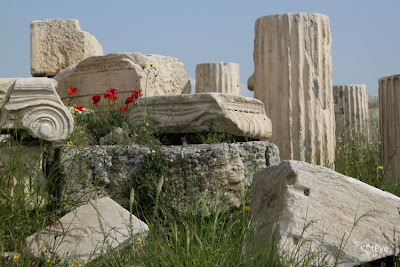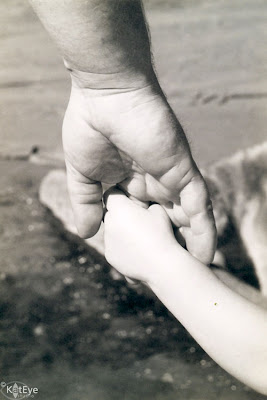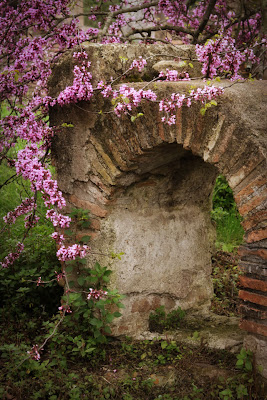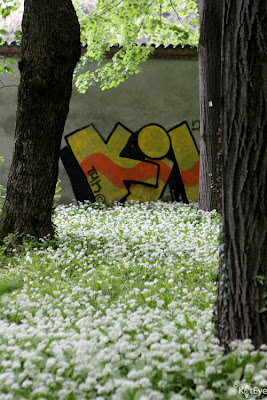Greetings! Welcome to November’s Exploring with a Camera. This month I am going back to Italy, literally and figuratively, as we study chiaroscuro, or light/dark contrast. I found myself creating of images with strong light/dark contrast on my recent trip to England, reminding me that I used this technique on a regular basis when I was living in Italy. Images like this can create a strong mood and story.
Chiaroscuro is an Italian word, combining the words for light (chiaro) and dark (scuro), and it refers to an artistic technique of using light and dark to render an object as three dimensional in two dimensional art. It is commonly used to refer to very strong light and dark contrasts in a piece of art, such as seen in the works of Caravaggio and Rembrandt. If you aren’t familiar with their paintings, give the links a quick click to see some examples.
In photography, the concept of chiaroscuro can be used to create dramatic images. Creating an image with strong light/dark contrast has some challenges, however. Let’s take a look at how to overcome them so we can use this wonderfully dramatic artistic effect.
Contrast and your Camera
The built in light meters in our digital cameras are a fantastic tool, but they can’t read our artistic intent. The camera’s automatic settings are programmed to work with the light meter to get an even exposure across the frame. It reads the light and dark and recommends an exposure to get an average, based on mid-tone grey. This works great when we have even lighting and want the entire frame illuminated, but when we have a situation with a strong light/dark contrast, the automated exposure can be dramatically wrong. If there is a small amount of light compared to dark areas within the frame, to get the average exposure camera will try to make the darks lighter, and will overexpose. If there is a small amount of dark in light, the camera will try to make the lights darker, and will underexpose.
For an effective chiaroscuro image, you need to expose for where you want the detail. To do that, you will need to compensate your exposure manually, increasing or decreasing the exposure to get the desired effect. You can use manual mode or exposure compensation in the creative modes to adjust the exposure. Look up exposure compensation and exposure modes in your camera manual to learn more. (If you’re not clear on this, my Digital Photography Basics ebook will be ready very soon and it has a more thorough explanation. Sign up for the Kat Eye News to be notified when it’s available.)
For the typical chiaroscuro effect, a small amount of light in dark, you will want to underexposure. This will keep the dark tones very dark, almost black, while the light tones will not be overexposed. Play around with your exposure, however, to see what works best for the specific image you want to create.
If your light source is actually in your frame, don’t worry if your highlights are overexposed. In the example below, underexposing further would render the view out the window visible, but would have put the figure in silhouette — not the desired effect. With chiaroscuro, you want to see the form of the subject.
You can also adjust your highlights and shadows in post processing to create greater light/dark contrast. In this image, I pushed the shadows darker to create more contrast between the figure and the alley.
Finding the Light
It takes the right lighting situation to create a chiaroscuro effect. You need the contrast of light in dark, which requires a light source that drops off fairly quickly into darkness. An interior room with one window, an alley opening into sun, or a light at night all provide the opportunity for creating with light/dark contrast.
There is no specific direction the light needs to be relative to the camera. In my examples, I get chiaroscuro effects with backlight, side light, and top light.
Focal Point
When you have a strong light/dark contrast, it will become the focal point of your image, whether you intend it or not. Going back the concept of visual weight, strong light/dark contrast has a strong pull on the viewer’s eye. If your intended focal point is not the part of the image with the strongest contrast, there will be competition between the two. I’ve found that creating the focal point in the point with highest contrast is effective.
In this image below, the focal point is the door at the end of the alley. The backlighting makes the door the highest contrast element in the image. In addition, all lines lead to this door, and the door is in focus. All of these give the door visual weight, pulling the eye right to it.
Now consider a similar image, with the wall in focus instead of the door. Does it work as well?
I don’t think so. The strong light/dark contrast still pulls my eye but since it’s not in focus, my eye has to wander around the image trying to find the intended focal point.
Let’s also consider the effects of color in the image. Bright color can be as strong as light/dark contrast when considering visual weight. You will notice that many of my chiaroscuro images are in black and white. Color can, at times, be a detractor from the intended focal point. Consider the alley image again, this time in color. Does it work as well as the black and white?
In my opinion, no. The green of the leaves and wall attract my eye and detract from the door. The image is not as strong in color.
Practice makes Perfect
Creating effective chiaroscuro images takes practice and experimentation. To play with this technique:
- Find a place with a point light source, like a lamp or a window in an otherwise dark room.
- Grab a volunteer to model for you or set up a small still life.
- Take multiple images from different angles and at different exposures, and also try varying your intended focal point.
- Review the images and see what works out of the camera and with post processing.
Have fun! I look forward to seeing your exploration of chiaroscuro images. You can link in and share through the end of the month!





















